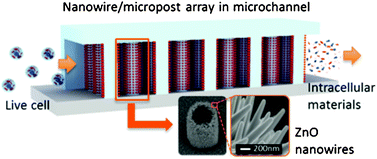Nanowire-integrated microfluidic devices for facile and reagent-free mechanical cell lysis†
Abstract
Cell lysis is an essential task for the detection of intracellular components. In this work, we introduce novel microfluidic devices integrated with patterned one-dimensional


 Please wait while we load your content...
Please wait while we load your content...